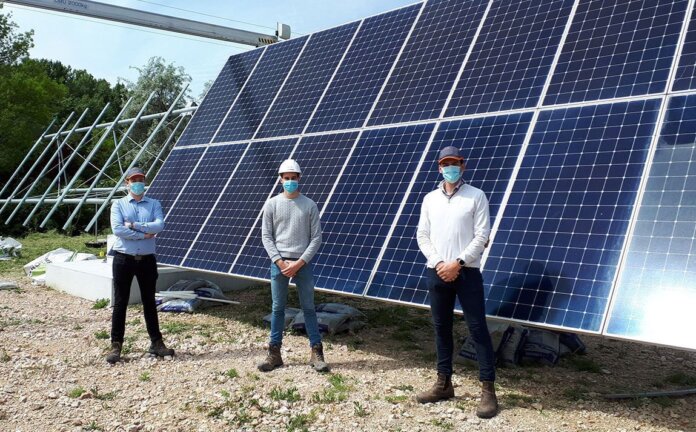Nexans Solar Technologies (NST) has signed its first contract to design, manufacture and supply its KEYLIOS Solar Trackers for Reden, a company that specializes in the development of photovoltaic projects and a supplier of fully integrated energy.
Over 800 of the solar trackers will be installed at Reden’s next four solar parks, located in the southwest of France, with a combined peak capacity of 26 MW.
The project will be performed in partnership with OMEXOM ENR SO, the company in charge of the construction of the parks, including the assembly and installation of the trackers.
NST, Nexans‘ newest subsidiary, is an internal startup created in 2018 as part of Nexans’ strategic plan for the global transition to renewable energies. NST aims to offer added-value products and services to key players in the sector, notably power producers and investors.
Solar trackers optimize the output of large scale commercial solar parks by enabling the solar panels to follow the sun’s daily path across the sky. Typically, using trackers will increase the electricity output of a solar park by 15 to 25% compared to fixed structures.
Unlike conventional centralized beam structures that only support a single vertical row of modules (1V), the KEYLIOS Solar Tracker features a truss beam structure that is specifically designed to support a double vertical row (2V), bringing a much greater resistance to the climatic forces that cause approximately 50% of the failures in solar parks and will therefore increase the reliability and life of the asset.
The second critical feature of the KEYLIOS Solar Tracker is that it only needs two foundations for a typical 36 kW array, while a conventional design would need three to five times more. That opens up possibilities to locate solar parks in locations that were previously impractical to trackers, such as old landfill sites or quarries and other industrial wastelands, especially where the soil is unstable.
“After the solar modules and inverters, trackers are the third key building block of solar parks. They represent more than 10% of the overall investment. But they can make it possible to gain an average 20% increase in income from the electricity produced. That’s why we targeted a new generation of solar tracker as the first product for our startup business,” says Alain Robic, general manager of technologies at Nexans Solar.
“Furthermore, a single-axis design like our KEYLIOS Solar Tracker, when deployed on the utility-scale, delivers the lowest levelized cost of energy (LCoE) compared to any other power generation technology,” he adds.
The KEYLIOS Solar Tracker enables an array of solar modules to tilt through an angle from -60 degrees east to +60 degrees west along a north-south axis. In high winds, the array can be brought to a safe horizontal position to reduce it’s exposure and can also be tilted to a high inclination in winter to prevent snow adhering to the modules or to help the cleaning operation. They also offer a better compatibility with upcoming bifacial modules.
The KEYLIOS Solar Trackers are designed by Nexans Solar Technologies in France and manufactured at various sites across Europe and Turkey. The first solar park fitted with the KEYLIOS Solar Trackers will be delivered in September – the next three will be delivered by the end of the year.
